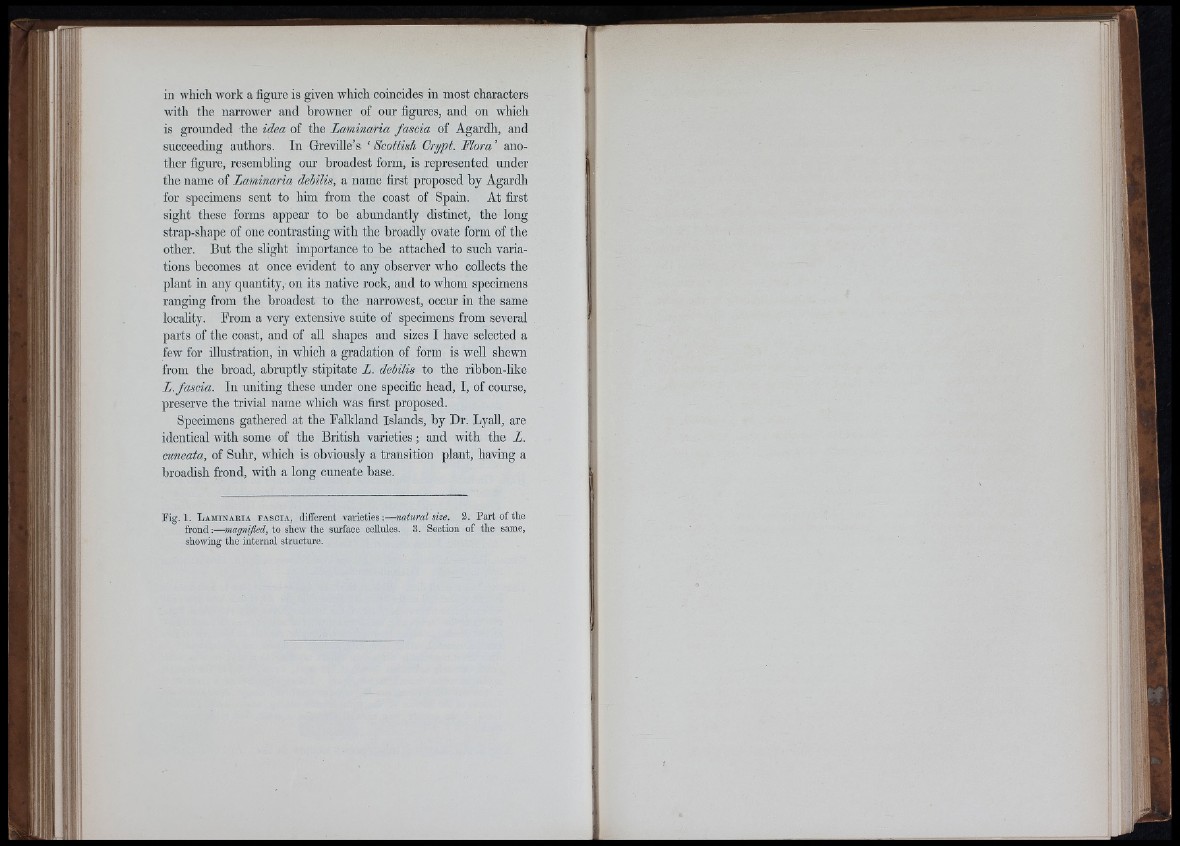
in which work a figure is given which coincides in most characters
with the narrower and browner of our figures, and on which
is grounded the idea of the Laminaria fascia of Agardh, and
succeeding authors. In Greville’s ‘Scottish Crypt. Mora’ another
figure, resembling our broadest form, is represented under
the name of Laminaria debilis, a name first proposed by Agardh
for specimens sent to him from the coast of Spain. At first
sight these forms appear to be abundantly distinct, the long
strap-shape of one contrasting with the broadly ovate form of the
other. But the slight importance to be attached to such variations
becomes at once evident to any observer who collects the
plant in any quantity, on its native rock, and to whom specimens
ranging from the broadest to the narrowest, occur in the same
locality. From a very extensive suite of specimens from several
parts of the coast, and of all shapes and sizes I have selected a
few for illustration, in wliich a gradation of form is well shewn
from the broad, abruptly stipitate L. debilis to the ribbon-like
L. fascia. In uniting these under one specific head, I, of course,
preserve the trivial name which was first proposed.
Specimens gathered at the Falkland Islands, by Dr. Lyall, are
identical with some of the British varieties ; and with the L.
cuneata, of Suhr, which is obviously a transition plant, having a
broadish frond, with a long cuneate base.
E g . 1. L a m in a k ia f a s c ia , different varieties:— natural size. 3. Part of the
frond;—magnified, to t\iO surface cellules. 3. Section of the same,
showing the internal structure.